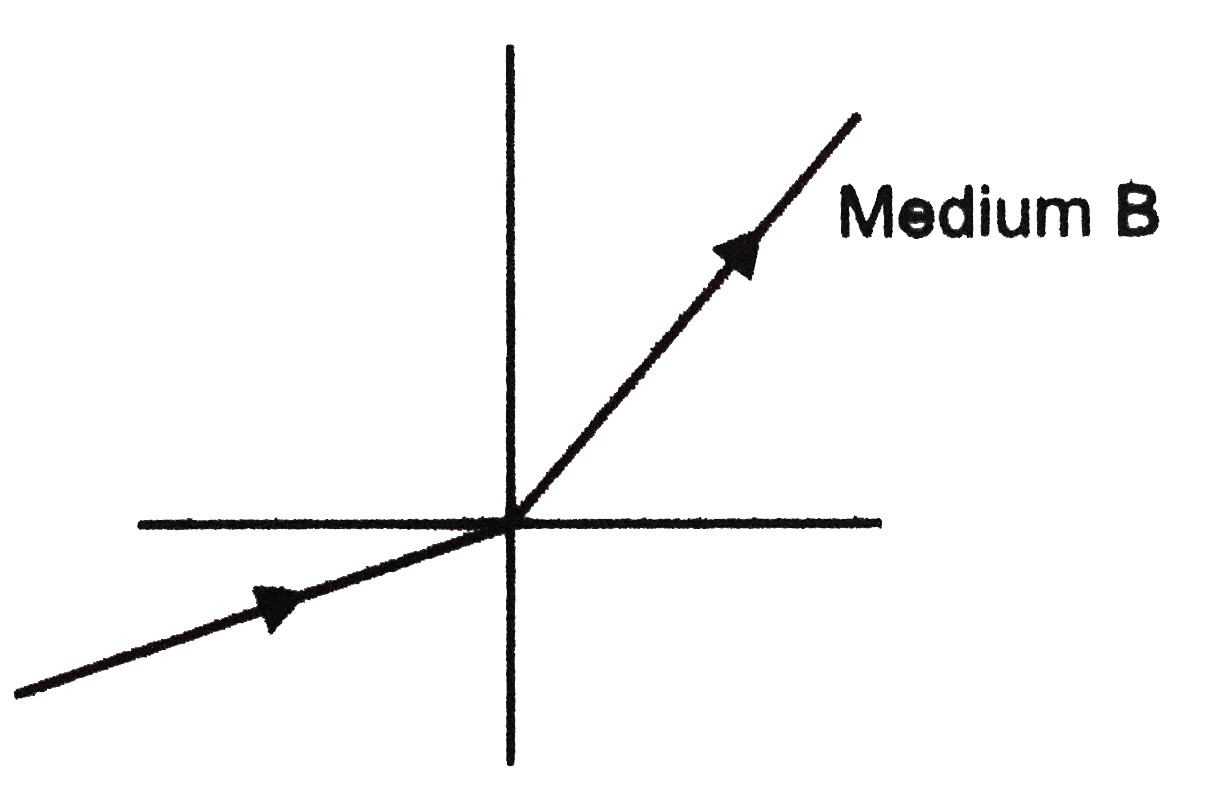When light travels from one medium to the other of which the refractive index is different, then which of the following will change
Frequency, wavelength and velocity
Frequency and wavelength
Frequency and velocity
Wavelength and velocity
The correct Answer is:4
To solve the question regarding what changes when light travels from one medium to another with different refractive indices, we can analyze the properties of light and the behavior of waves at the interface of two different media.
1. Understanding Refractive Index:
The refractive index (µ) of a medium is defined as the ratio of the speed of light in vacuum (c) to the speed of light in that medium (v). This can be expressed as:
μ=cv
where c is the speed of light in vacuum and v is the speed of light in the medium.
2. Change in Velocity:
When light enters a medium with a different refractive index, its speed changes. If the refractive index increases (light moving from a less dense to a denser medium), the speed of light decreases. Conversely, if the refractive index decreases (light moving from a denser to a less dense medium), the speed of light increases. Therefore, the velocity of light changes when it moves from one medium to another.
3. Frequency of Light:
The frequency of light is determined by the source of the light and remains constant when light transitions between different media. This is because frequency is related to the energy of the photons, which does not change when light enters a new medium.
4. Wavelength of Light:
The relationship between speed (v), frequency (f), and wavelength (λ) of light is given by the equation:
v=f⋅λ
Since the frequency (f) remains constant and the velocity (v) changes when light enters a new medium, the wavelength (λ) must also change to satisfy this equation. Specifically, if the speed of light decreases, the wavelength decreases, and if the speed increases, the wavelength increases.
5. Conclusion:
From the analysis, we conclude that when light travels from one medium to another with different refractive indices:
- The velocity of light changes.
- The wavelength of light changes.
- The frequency of light remains constant.
Thus, the correct answer is that the wavelength and velocity change.
Final Answer:
The correct option is D: Wavelength and Velocity.
The refractive index (µ) of a medium is defined as the ratio of the speed of light in vacuum (c) to the speed of light in that medium (v). This can be expressed as:
μ=cv
where c is the speed of light in vacuum and v is the speed of light in the medium.
When light enters a medium with a different refractive index, its speed changes. If the refractive index increases (light moving from a less dense to a denser medium), the speed of light decreases. Conversely, if the refractive index decreases (light moving from a denser to a less dense medium), the speed of light increases. Therefore, the velocity of light changes when it moves from one medium to another.
The frequency of light is determined by the source of the light and remains constant when light transitions between different media. This is because frequency is related to the energy of the photons, which does not change when light enters a new medium.
The relationship between speed (v), frequency (f), and wavelength (λ) of light is given by the equation:
v=f⋅λ
Since the frequency (f) remains constant and the velocity (v) changes when light enters a new medium, the wavelength (λ) must also change to satisfy this equation. Specifically, if the speed of light decreases, the wavelength decreases, and if the speed increases, the wavelength increases.
From the analysis, we conclude that when light travels from one medium to another with different refractive indices:
- The velocity of light changes.
- The wavelength of light changes.
- The frequency of light remains constant.
The correct option is D: Wavelength and Velocity.
Topper's Solved these Questions
- RAY OPTICS BOOK - VMC MODULES ENGLISHCHAPTER - RAY OPTICS EXERCISE - IN-CHAPTER EXERCISE-C
10 Videos
- RAY OPTICS BOOK - VMC MODULES ENGLISHCHAPTER - RAY OPTICS EXERCISE - IN-CHAPTER EXERCISE-D
9 Videos
- RAY OPTICS BOOK - VMC MODULES ENGLISHCHAPTER - RAY OPTICS EXERCISE - IN-CHAPTER EXERCISE-A
10 Videos
- QUIZBOOK - VMC MODULES ENGLISHCHAPTER - QUIZEXERCISE - PHYSICS
30 Videos
- RAY OPTICS AND WAVE OPTICS BOOK - VMC MODULES ENGLISHCHAPTER - RAY OPTICS AND WAVE OPTICS EXERCISE - IMPECCABLE
58 Videos
Similar Questions
When light is refracted which of the following does not change?
View SolutionRay of light bends as light travels from one medium to another.
View SolutionWhen light is refracted into a medium
View SolutionWhen light is refracted into a medium
View SolutionAssertion : When light passes from one medium to another of different density the only quantity which is unchanged is its wavelength .
Reason : The wavelength of light is not related to the refractive index of the medium .
View SolutionWhen light passes from one medium into another medium, then the physical property which does not change is:
View SolutionWhich one of the following is different from others?
View SolutionA light ray enters from medium A to medium B as shown in Figure. The refractive index of medium A relative to B will be

View SolutionStatement-1: As light travels from one medium to another, thhe frequency of light doesn't change.
Statement-2: Frequency is the characteristic of source.
View SolutionLet the refractive index of a denser medium with respect to a rarer medium be n12 and its critical angle be θc. At an angle of incidence A when light is travelling from denser medium to rarer medium, a part of the light is reflected and the rest is refracted and the angle between reflected and refracted rays is 90∘, Angle A given by -
View Solution
